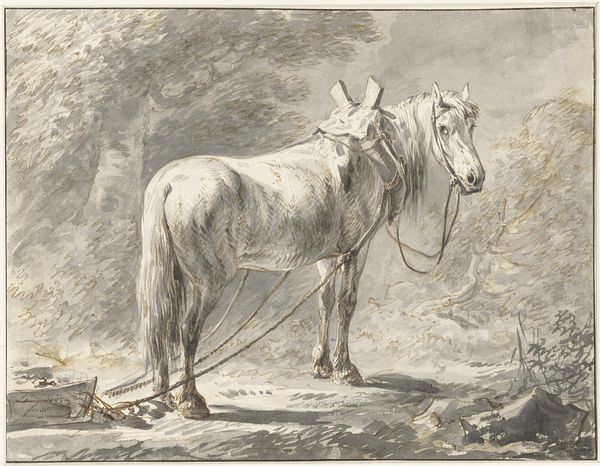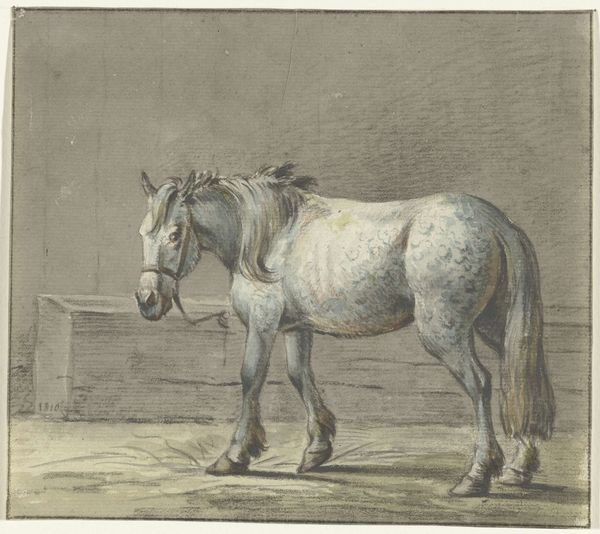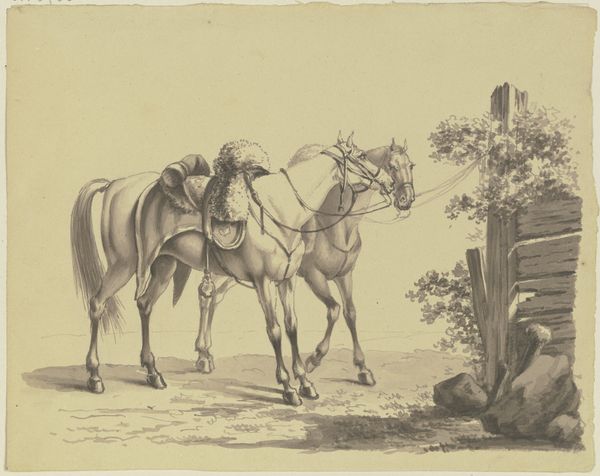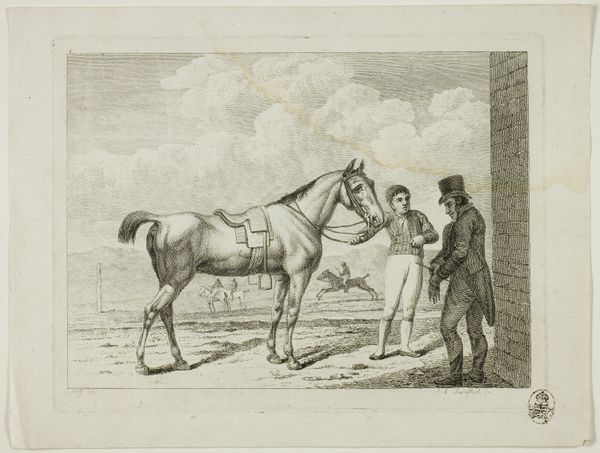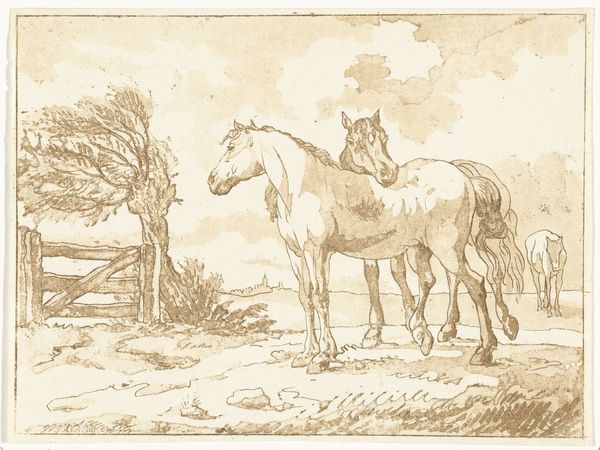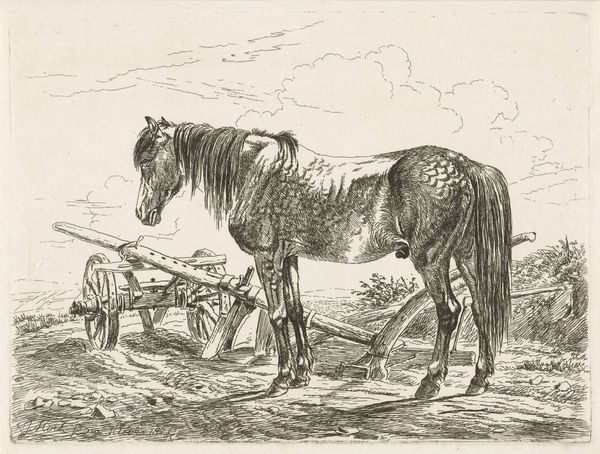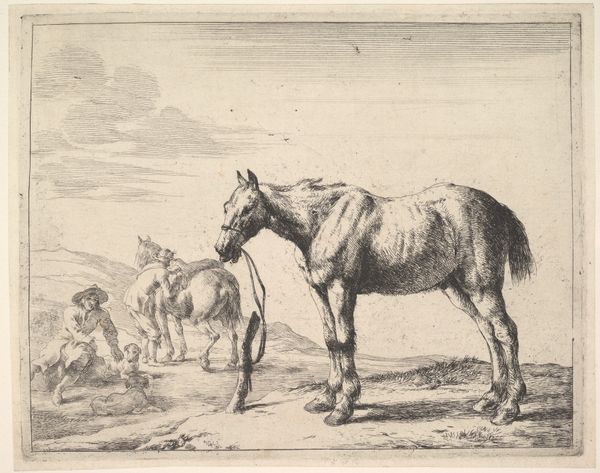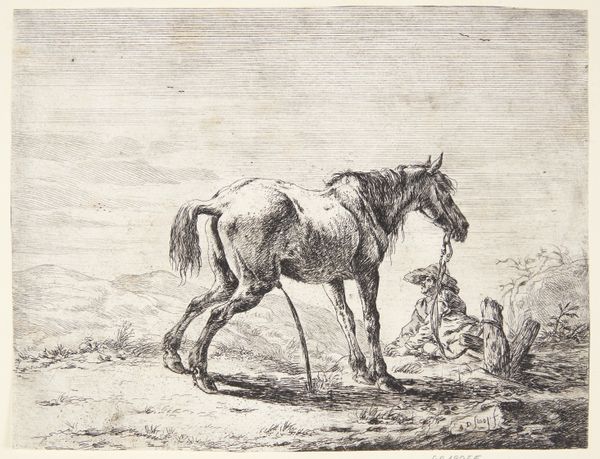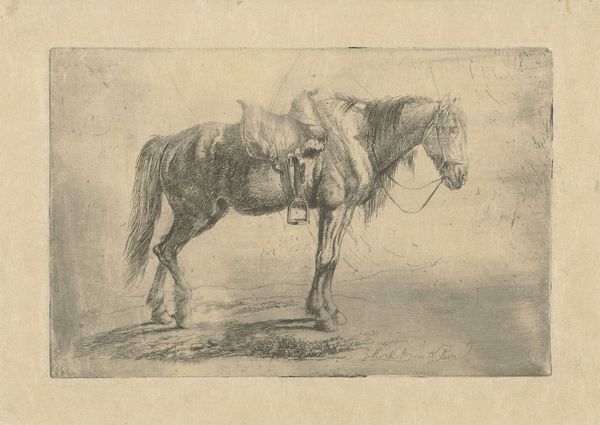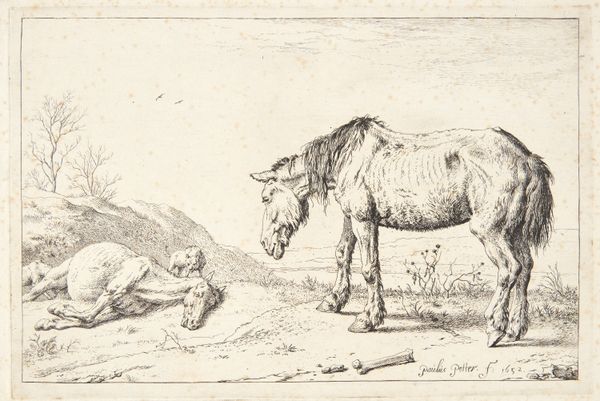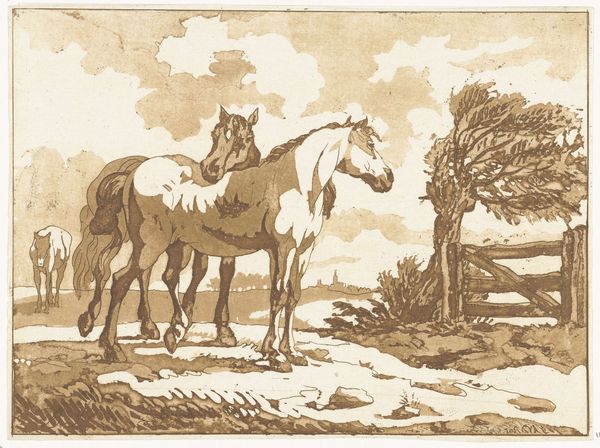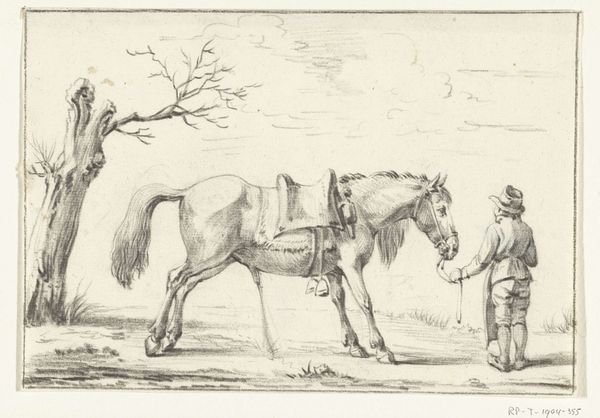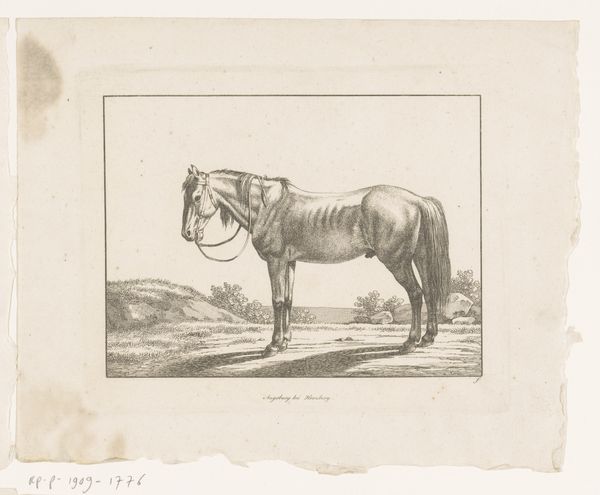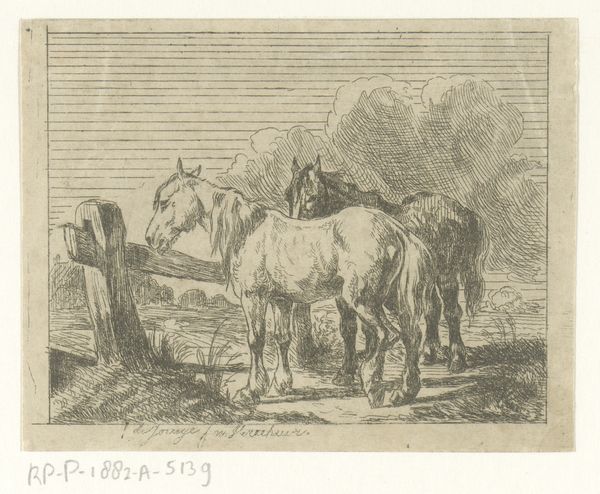
drawing, ink, pencil
#
portrait
#
drawing
#
pencil sketch
#
landscape
#
figuration
#
ink
#
romanticism
#
pen-ink sketch
#
pencil
#
horse
#
realism
Dimensions: height 91 mm, width 110 mm
Copyright: Rijks Museum: Open Domain
Editor: Here we have Wouter Johannes van Troostwijk's "A Horse in a Meadow Tied to a Fence," created in 1802, using pen, ink, and pencil. The monochromatic tones create a very subdued and still atmosphere. What's your perspective on this work? Curator: Thank you. Immediately, I’m struck by the depiction of the horse within a landscape – a common subject, yes, but consider the social context. The horse, historically, represents power, labor, and freedom, often linked to masculinity. Here, tethered, it suggests constraints. What does this visual paradox suggest to you about societal control in the Netherlands at the turn of the 19th century? The drawing is so subtly critical, don’t you think? Editor: That's interesting. I hadn’t considered the horse as a symbol of power being deliberately restrained. Curator: And consider the artist’s choices: the use of pencil and ink gives it an immediacy, a feeling of being observed, captured in a moment. There is a stillness, yet also a latent energy, it is barely being contained. Van Troostwijk perhaps implies a tension between human control and natural freedom. What does that tension communicate to a contemporary audience, living through environmental crisis? Does it make us rethink our relationship to the natural world and to animals? Editor: I think it does. Seeing it now, I read it less as a simple depiction and more as a commentary on imposed limitations. Curator: Precisely! It provokes us to reflect on power dynamics, not just historically but as they persist today, informing contemporary discourses about liberty, confinement, and human intervention within natural systems. Editor: That makes me think differently about other artwork from this period! It's like uncovering a whole new layer of meaning. Curator: Exactly. And it encourages us to always question whose stories are being told, and whose are being overlooked.
Comments
No comments
Be the first to comment and join the conversation on the ultimate creative platform.
